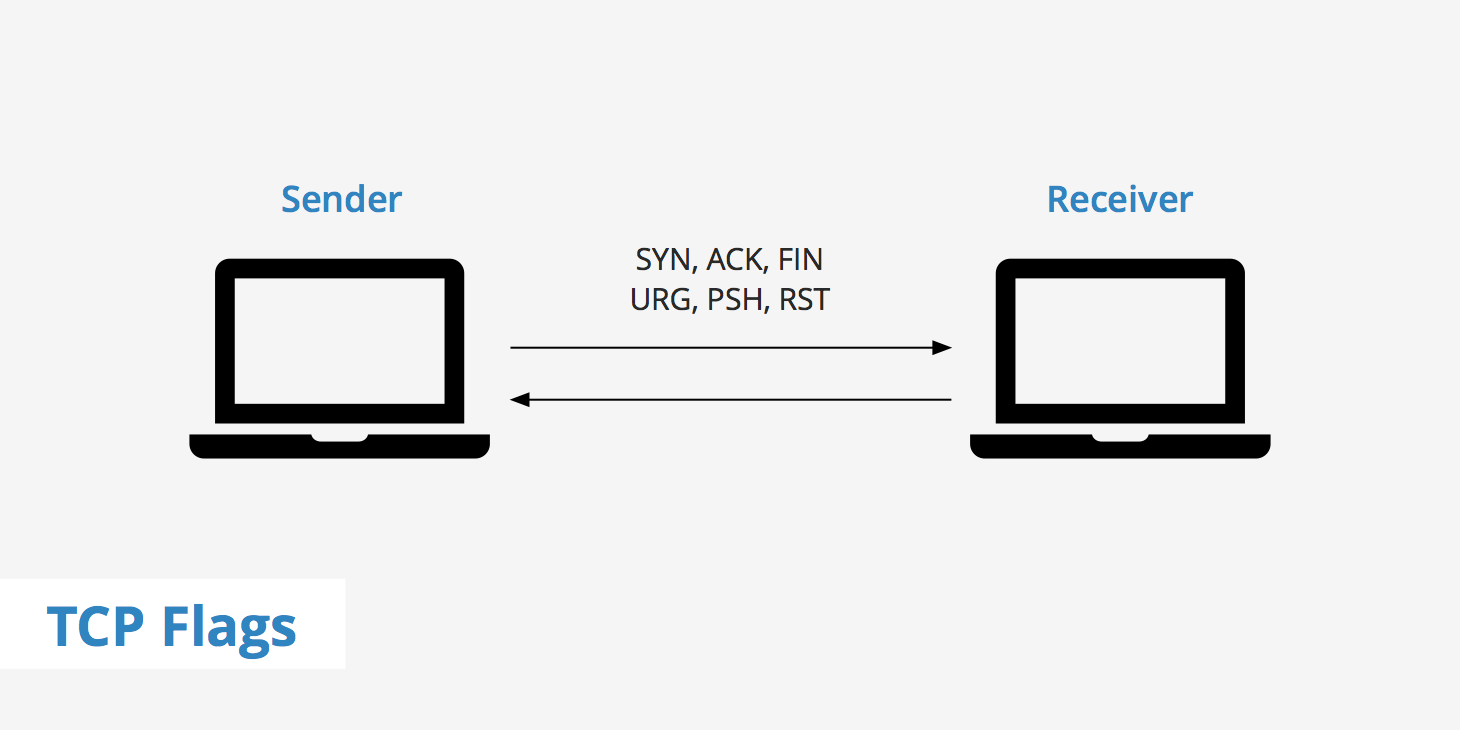TCP Flags

What are TCP flags?
TCP flags are used within TCP packet transfers to indicate a particular connection state or provide additional information. Therefore, they can be used for troubleshooting purposes or to control how a particular connection is handled. There are a few TCP flags that are much more commonly used than others, such as SYN, ACK, and FIN. However, this post will go through the complete list of TCP flags and outline what each one is used for.
List of TCP flags
Each TCP flag corresponds to 1 bit in size. The list below describes each flag in greater detail. Additionally, check out the corresponding RFC section attributed to certain flags for a more comprehensive explanation.
SYN- The synchronization flag is used to establish a three-way handshake between two hosts. Only the first packet from both the sender and receiver should have this flag set. The following diagram illustrates a three-way handshake process.ACK- The acknowledgment flag is used to acknowledge the successful receipt of a packet. As we can see from the diagram above, the receiver sends anACKas well as aSYNin the second step of the three-way handshake process to tell the sender that it received its initial packet.FIN- The finished flag means there is no more data from the sender. Therefore, it is used in the last packet sent from the sender. It frees the reserved resources and gracefully terminates the connection.URG- The urgent flag is used to notify the receiver to process the urgent packets before processing all other packets. The receiver will be notified when all known urgent data has been received. See RFC 6093 for more details.PSH- The push flag is similar to theURGflag and tells the receiver to process these packets as they are received instead of buffering them. Usually, by default, the transport layer waits some time for the application layer to send enough data according to the maximum segment size so that the number of packets transmitted over the network is minimized. However, this is not desirable for certain applications, such as interactive applications (chatting). By using Push, this problem is solved.RST- The reset flag gets sent from the receiver to the sender when a packet is sent to a particular host that was not expecting it.ECE- This flag is responsible for indicating if the TCP peer is ECN capable. See RFC 3168 for more details.CWR- The congestion window reduced flag is used by the sending host to indicate it received a packet with theECEflag set. See RFC 3168 for more details.NS(experimental) - The nonce sum flag is still an experimental flag used to help protect against accidental, malicious concealment of packets from the sender. See RFC 3540 for more details.
Analyzing TCP flags in the CLI
You can view which TCP flags are used for every TCP packet directly from within your command line interface. To do so, you need to run a tcpdump. This needs to be done by a root user so if you don't have root access, try running the following:
sudo tcpdump
This will allow you to analyze all packets being sent and will display packets containing any of the TCP flags. However, if you would like to run a tcpdump only on packets containing a certain flag you can use one of the following commands.
ACK-sudo tcpdump 'tcp[13] & 16 != 0'SYN-sudo tcpdump 'tcp[13] & 2 != 0'FIN-sudo tcpdump 'tcp[13] & 1 != 0'URG-sudo tcpdump 'tcp[13] & 32 != 0'PSH-sudo tcpdump 'tcp[13] & 8 != 0'RST-sudo tcpdump 'tcp[13] & 4 != 0'
Summary
Knowing your TCP flags can be quite useful for troubleshooting purposes. If you need to analyze your TCP packets quickly, it's easy to run a tcpdump command for a particular flag and then retrieve the results you require. Be sure to check out the RFC section of any of the corresponding TCP flags above to go into even greater detail of what each one is used for and how it works.